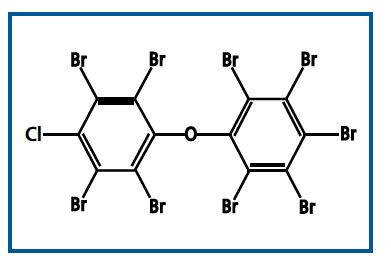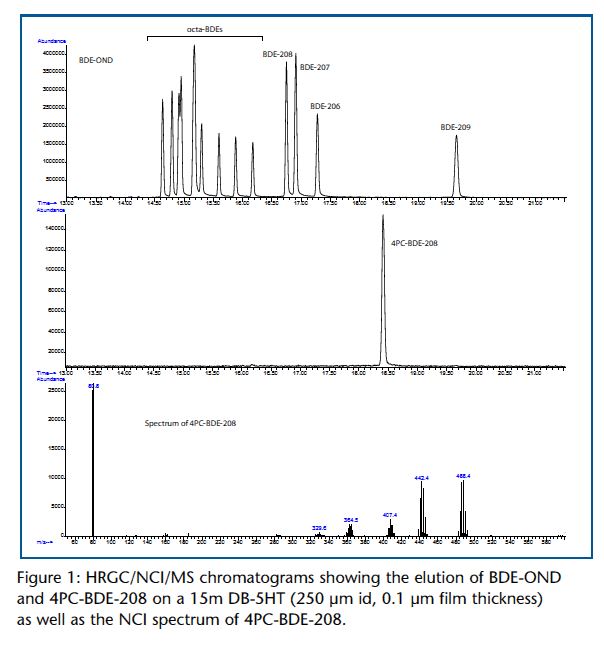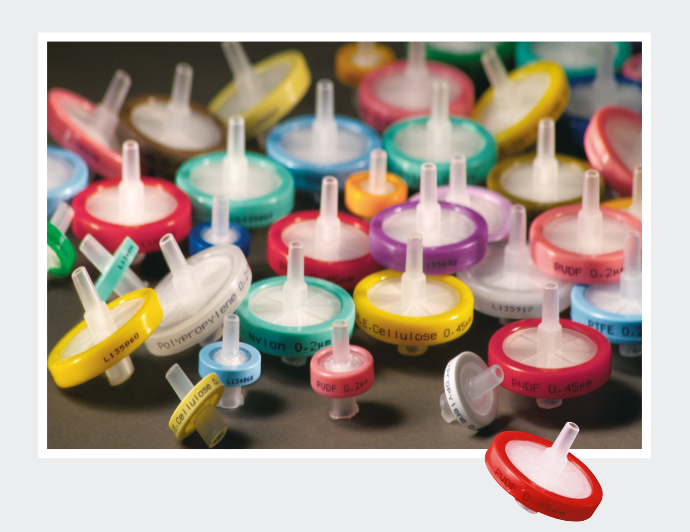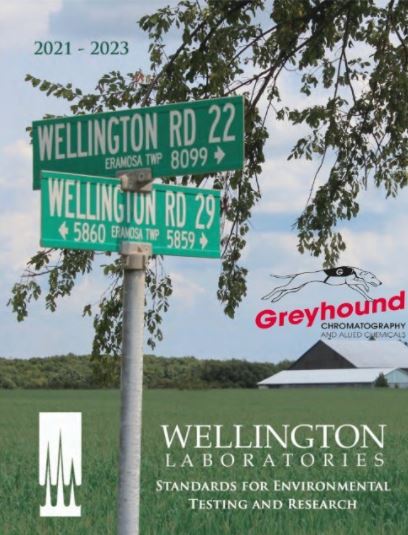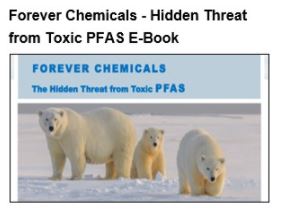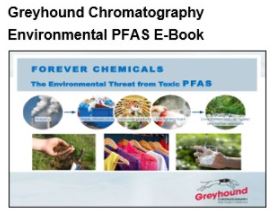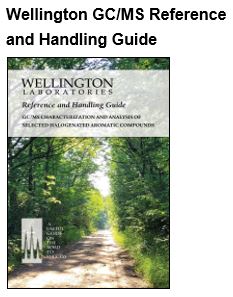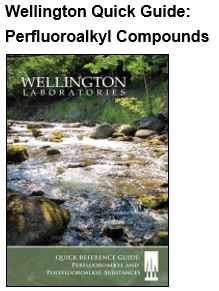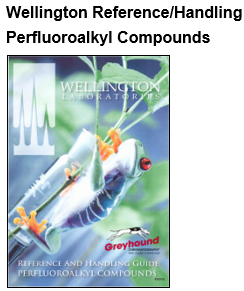2,2',3,3',4,5,5',6,6'-Nonabromo-4'-chlorodiphenyl ether Certified Reference Standard

Mass-labelled reference standards are considered to be the ideal choice as surrogate standards for the qualification of environmental contaminants in complex matrices because their physical and chemical properties are essentially identical to those of the analytes of interest. However, in cases where an instrumental method is being used that can not differentiate between mass-labelled and native compounds (such as HRGC/ECD and HRGC/NCI/MS), an alternative standard needs to be employed.
In the case of the highly brominated diphenyl ethers, it is possible to use 4PC-BDE-208 as a surrogate when instrumental methods preclude the use of mass-labelled standards. Figure 1 shows the elution of 4PC-BDE-208 relative to a mixture of all of the octa-, nona-, and decabromodiphenyl ethers (BDE-OND). Since it elutes between BDE-206 and BDE-209, and is completely resolved from all of the BDE congeners, it is an excellent choice for use as a surrogate for these compounds. Its similarity in structure and chemical composition to the brominated diphenyl ethers also suggests that it will behave similarly during extraction and/or sample clean-up.
Obviously, 4-PC-BDE-208 would not be a suitable surrogate if it had potential to be present in environmental matrices. The possibility does exist that incineration of wastes containing BDEs as well as a source of chlorine could lead to its formation. However, this process is unlikely considering its structure and the liklihood of chlorine-for-bromine exchange. A recent literature search supported this deduction as no report of 4-PC-BDE-208 was found.
Analysis of the penta-, octa, and deca-BDE technical mixtures also did not result in the detection on 4PC-BDE-208 reinforcing the conclusion that it is a suitable surrogate standard for the highly brominated diphenyl ethers.
For over 40 years Greyhound Chromatography has been supplying high quality Chromatography consumables to laboratories around the world. Greyhound’s extensive range covers all areas of Environmental, Petrochemical, Food, Forensics, Chemical and Pharmaceutical analysis. Backed by a highly experienced technical services team, Greyhound is the preferred source amongst today’s analysts.
Greyhound Chromatography is pleased to supply Wellington Certified Reference Standards Reference Standards to Research and Analysis laboratories worldwide.
Q-Fil Certified Syringe Filters
Q-Fil Certified Syringe Filters set the new Quality standard for today’s laboratory syringe filters Manufactured from the highest quality medical grade high density polypropylene, Q-Fil Certified Syringe Filters provide excellent chemical compatibility with acids, alcohols, bases, ethers, glycols, ketones and oils, with maximum operating temperatures of 135°C.
Every colour-coded filter is printed with the individual batch number, details of the membrane material and its pore size, on the outside rim of the filter, making them unique for traceability, GLPs and validation purposes.
Why filter your samples for HPLC?
• To protect the HPLC column, the column inlet frits and capillary columns against blockage (plugging) caused by particulate matter in the sample
• To protect injection valves from damage caused by scratching and wear of the valves internal components, caused by harmful particulate matter in the unfiltered sample, thereby reducing instrument downtime.
About our Quality Control procedures
• Every batch of filters is tested by an independent laboratory to ISO 17025 quality procedures
• Every individual Q-Fil Certified Syringe Filter is visually inspected to ensure it meets our manufacturing and quality control specifications
• Samples of all our syringe filters and their respective raw technical data are stored for a period of 5 years from the date of manufacture for future reference
• Each batch of filters is tested prior to release for
- External Dimensions
- Bubble Point
- Burst Pressure
- Filter Integrity
- Water Flow Rate
- UV Extractables and compliance with all technical procedures
Why use Greyhound Q-Fil Certified Syringe Filters?
• Q-Fil Certified Syringe Filters are manufactured in compliance with ISO 9001:2000 quality procedures
• Every box is supplied with a Certificate of Analysis and Conformance to guarantee its batch to batch quality and performance
• The unique encapsulating process developed for these filters, forces the sample to pass only through the membrane, thus avoiding the possibility of leaks or contamination
• Available in the most popular sizes, porosities and membrane types
• Excellent resistance to all routinely used HPLC solvents
• Filter housings are manufactured from high density medical grade polypropylene
• Extremely low level of extractables for highly sensitive work
• Luer connections fully comply with ISO 594-1
• Filters are available with standard and ‘SlimTip’ sized outlets
Selecting the right Q-Fil Certified Syringe Filter
• Choose the size of filter based on the volume of sample to be filtered
• Choose the filters porosity based on the size of the potential particulates in the sample. It is important to be aware that the finer the porosity of the membrane the greater the pressure will be required to pass the sample through the filter. A sample containing large quantities of particulates is best filtered using a filter with a built-in glass fibre pre-filter
• Choose the type of membrane based on the solvent being filtered.
Filter Sizes
All our filters have female Luer Lock inlets and are available in three diameters -
25mm Diameter
Designed for large sample volumes or solvent filtration
Wide cross sectional area 3.55cm2
Maximum filtration volume >10ml
Maximum operating pressure 550 Kpa
13mm Diameter
Suitable for most applications
Filtration area of 0.95cm2
Maximum filtration volume 1 to 10ml Maximum operating pressure 750 Kpa Now available with ‘SlimTip’ (ST) outlet
4mm Diameter
Suitable for most applications Ideal for small samples <1ml Pore sizes of 0.20µm and 0.45µm
SlimTip Filters (ST)
13mm diameter syringe filters are now available with the new ‘SlimTip’ outlet for direct filling of microvials.
Pore Sizes
Q-Fil Certified Syringe Filters are available in 0.20µm and 0.45µm pore sizes. The 0.20µm filters remove the smallest particulates whilst the 0.45µm filters are designed to remove particulates which would be detrimental to most analytical columns.
Pre-filters (page 6) have a glass microfibre membrane which is chemically inert and resists most solvents. Q-Fil glass microfibre pre-filters are recommended for removing large particulates from the sample and are ideal for dissolution tests.
Glass microfibre membranes are also available mounted before the microporous filter membrane in the polypropylene housing. The glass pre-filter removes the larger particulates and prevents premature clogging of the filter.
CONTACT US
Tel: +44 (0) 151 649 4000
Email: marketing@greyhoundchrom.com
FOLLOW US
YOU MAY ALSO BE INTERESTED IN OUR NEWSLETTER


